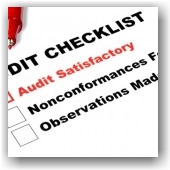Archive for the ‘Department Of Homeland Security (DHS)’ Category
Wednesday, January 15th, 2014
 There are certain classes of non-profit employers who are exempt from the H-1B cap. The exemption from the cap only applies to institutions of higher education, non-profit research institutions, government research institutions, and non-profits formally affiliated with an exempt educational institution. Let’s discuss this.
There are certain classes of non-profit employers who are exempt from the H-1B cap. The exemption from the cap only applies to institutions of higher education, non-profit research institutions, government research institutions, and non-profits formally affiliated with an exempt educational institution. Let’s discuss this.
Institutions of higher education: Under the definition, an institution of higher education is one which:
- admits students who have completed secondary education;
- is licensed to provide education beyond secondary school;
- provides educational programs for which the institutions award bachelors’ degrees or provide programs of not less than 2 years that are acceptable for full credit toward bachelors’ degrees;
- is a public or nonprofit institution; and
- is accredited or has been granted pre-accreditation status by a recognized accrediting agency.
What does it mean to be related or affiliated to a higher education institution nonprofit entity?
The USCIS states that it is sufficient that a nonprofit entity is related or affiliated to an institution of higher education through shared ownership, control or be somehow affiliated to the higher education institution as a member, branch or subsidiary.
This narrow definition makes the types of non-profits that qualify for this exemption few and far between. For instance, non-profit service, community, policy and arts organizations would not qualify for the exemption from the H-1B cap. Unless the non-profit employer is primarily devoted to research, or is formally affiliated with a university, it will not qualify as a cap-exempt H1B petitioner. Public secondary schools do not qualify for H1B cap-exemption unless they have a formal affiliation agreement with a college or university. However, the exemption does cover certain professionals employed by a for-profit entity but but does when working at an exempt location, as long as the work continues to serve the core mission of the exempt institution, such as a physicians’ practice group affiliated with and located at a university teaching hospital.
Nonprofit Research Organizations | Government Research Organizations: Nonprofit research organizations or governmental research organizations, are defined in 8 CFR 214.2(h)(19)(iii)(C), as follows:
- A nonprofit research organization is an organization that is primarily engaged in basic research and/or applied research.
- A governmental research organization is a United States Government entity whose primary mission is the performance or promotion of basic research and/or applied research.
Basic research is general research to gain more comprehensive knowledge or understanding of the subject under study, without specific applications in mind. Basic research is also research that advances scientific knowledge, but does not have specific immediate commercial objectives although it may be in fields of present or potential commercial interest. It may include research and investigation in the sciences, social sciences, or humanities.
Applied research is research to gain knowledge or understanding to determine the means by which a specific, recognized need may be met. Applied research includes investigations oriented to discovering new scientific knowledge that has specific commercial objectives with respect to products, processes, or services. It may include research and investigation in the sciences, social sciences, or humanities.
Conclusion
It should be noted that all of the criteria above must be met in order for an institution or an organization to qualify for a cap-exempt status for H-1B purposes. Such institutions and organizations can indicate that their H1B filing is cap exempt by marking Form I-129 (Petition of Non-Immigrant Worker) with a “yes” answer to questions 1, 2, or 3 in Part C of the H1B Data Collection and Filing Fee Exemption Supplement. Bear in mind that an employer or a foreign national who wishes to seek H-1B status under a cap-exempt petition must verify that they qualify for the cap exemption under one of the three categories above. It is recommended that you work with an immigration practitioner that understands this casework as the analysis is often complex. If you’d like to become a client of our office, please contact us at info@immigrationcompliancegroup.com or call 562 612-3996.
Tags: Department Of Homeland Security (DHS), DOL, H-1B Exempt Employers, H-1B NonProfits, H-1B Professionals, H-1B Visas, Immigration News, Labor Condition Application, LCA, Specialty Occupation, USCIS
Posted in Department Of Homeland Security (DHS), Department Of Labor (DOL), H-1B Visas, Immigration News, USCIS | Comments Off on Who are H-1B Exempt Employers?
Sunday, January 5th, 2014
 DHS/ICE continues to issue Notices of Intent to Fine (NOFs) at an unprecedented rate for Form I-9 related infractions. Mistakes occur in the I-9 process, it’s inevitable. While establishing a written compliance policy, training and careful prevention is the best approach. All employers should take time at the beginning of each year to conduct an internal audit and self-examination of their systems, operating procedures, and past and present practices for handling I-9s, as well as to access training needs for the employees charged with handling and supervising the I-9 process. We also recommend that you review your E-Verify submissions, as well as revisiting just how compliant your I-9 software really is with your vendor if you are using an electronic system.
DHS/ICE continues to issue Notices of Intent to Fine (NOFs) at an unprecedented rate for Form I-9 related infractions. Mistakes occur in the I-9 process, it’s inevitable. While establishing a written compliance policy, training and careful prevention is the best approach. All employers should take time at the beginning of each year to conduct an internal audit and self-examination of their systems, operating procedures, and past and present practices for handling I-9s, as well as to access training needs for the employees charged with handling and supervising the I-9 process. We also recommend that you review your E-Verify submissions, as well as revisiting just how compliant your I-9 software really is with your vendor if you are using an electronic system.
While there are many checklists and do-it-yourself guides and webinars available on the Internet and elsewhere, consulting a licensed attorney or specialist in the field who is familiar with I-9 and E-Verify compliance issues can save employers hours of research, provide a solution tailored to your organization, and save you thousands of dollars in fines and penalties should ICE knock on your door.
When ICE notifies an employer of their intention to perform an audit, it opens the door for an onslaught of inquiries and investigation from other government agencies that range from SSA mis-match issues to Department of Labor (DOL) wage and hour, USCIS, IRS, and more if you have areas of incompliance in your operating procedures. This is not the time during an audit when under pressure to clean up compliance problems.
New employers are often more at risk because many are not even aware of the I-9 requirement, and probably are also unaware of the need for all employees to complete the I-9 Form. Some are aware, but they lack knowledge concerning the regulations that govern the form; such as, timeframes, acceptable documents, form retention, and other important details that are integral to the process. Particularly, there are problems with industries such as IT consulting, healthcare, staffing agencies, and other organizations with multiple locations in regard to completing the I-9-Form remotely with the employer’s designated agent and employee in different locations.
These are just a few reasons why we urge you to assess the strengths and weaknesses of your present compliance program, and start the New Year fresh with a renewed commitment to implement best practices that will provide the foundation upon which you can develop and maintain a more compliant business and workforce.
You might be interested in joining our LinkedIn group, I-9/E-Verify: Smart Solutions for Employers,” and signing up to receive via RSS feed or email our Blog posts.
Tags: +, Department Of Homeland Security (DHS), DOL, E-Verify, I-9 AUDIT, I-9 Best Practices, I-9 Comipliance, I-9 Form, I-9 Training, I-9/E-Verify News, ICE, Immigration News, Legal Workforce, OSC, SSA
Posted in Department Of Homeland Security (DHS), Department Of Labor (DOL), Employer Compliance, Healthcare, I-9/E-Verify News, ICE, Immigration News, OSC, Social Security, Staffing Agencies, USCIS | Comments Off on Compliance Audits are Recommended for Employers at the Beginning of the New Year
Wednesday, December 18th, 2013
 Back in October of this year, President Obama stated “Immigration reform may not pass, but that’s no reason to give up the fight.”
Back in October of this year, President Obama stated “Immigration reform may not pass, but that’s no reason to give up the fight.”
The pro-immigration reform movement has united in a strong front and is the most broad and diverse that we’ve ever observed. The strategic and impassioned outcry from immigration activists are being heard in the hallways of Congress, in state offices across the country, groups fasting for immigration reform, holding prayer vigils, outbursts taking place in the middle of President Obama’s speeches, protestors chaining themselves to gates of federal buildings, and more – a full court press on the GOP. “The immigration reform movement has emerged as a relentless force that is prepared to hold all parties accountable in 2014,” states Julia Preston in her NY Times article.
The Background
In June 2013, the Senate passed their version of Comprehensive Immigration that doesn’t please everyone, but its passage was a victory for those who have been working on the issue for years and watched immigration reform fail many times over. It addresses undocumented immigrants, legal immigration, border security, employer hiring and an entry-exit system so the government knows if foreign nationals leave the country when their visa expires. The path to citizenship is long — 13 years or more — and arduous, but advocates are pleased that it would exist at all, given opposition from many Republicans and the failure of bills to carve out such a path in the past. Dreamers, young undocumented immigrants who came to the U.S. as children, would be able to earn green cards in five years, as would some agricultural workers. The bill adds huge increases in border security that catered to unsure Democrats and Republicans.
Although 3 out of 4 Americans want Congress to pass immigration reform with a path to citizenship, Speaker John Boehner and the House Republican Leadership are using stalling tactics and excuses to block reform from getting a vote on the House floor. There’s been no progress – total gridlock in the House of Representatives, while we’re told repeatedly that they are approaching CIR in a piecemeal manner and that all the individual bills will eventually be rolled into one comprehensive bill. The president recently commented, “If they want to chop that thing up into five pieces, as long as all five pieces get done, I don’t care what it looks like.” We ask, when will his happen? Sadly, not this year.
The question is will the Tea Party continue to set the agenda for the House GOP? Mounting frustration with the Tea Party may lead mainstream Republicans to move forward on immigration reform without them. In order for the GOP to win Hispanic and Asian voters, it is mandatory that they address the broken immigration system. There has been little to no (and at times incredibly awkward, contradictory and antagonistic) outreach and messaging to the immigrant community by the Republican Party. At this point in time, there is fear that if 11 million are granted citizenship, they’ll vote Democratic. We will have to see how this continues to play out moving into 2014.
Recently, On December 3, 2013, Speaker John Boehner announced the hiring of Rebecca Tallent to serve as immigration advisor in his office. Tallent worked as a staffer and later as Chief of Staff for Sen. John McCain. She left McCain’s office earlier this year to become the immigration policy director for the Bipartisan Policy Center where she also chaired the organization’s immigration task force. She’s helped draft amnesty bills for Sen. McCain in the mid-2000s and, in her role at the Bipartisan Policy Center, helped develop an immigration framework that includes amnesty for illegal aliens and massive increases in legal immigration. Her new appointment in Speaker Boehner’s office does send a positive signal that he’s laying the ground work to pass massive immigration reforms in 2014. However, NumbersUSA President Roy Beck said. “His new hire has done almost nothing the last decade except work for giant increases in foreign labor. But Boehner still has to persuade at least 118 Republican House Members that their constituents would be okay with an expansion of immigration. We are hopeful that the appointment of Rebecca Tallent will play an essential role in lifting immigration reform over the finish line in early 2014.
More reading…
Video: “Congress Fails to Tackle Immigration Reform”
Immigration Reform Advocates Descent on Capitol HIll; visiting 200 Offices
Other Articles on Immigration Reform
Tags: Comprehensive Immigration Reform, Congress, Department Of Homeland Security (DHS), House Republicans, Immigration Activists, Immigration News, Immigration Protestors, Immigration Rallies, Immigration Reform, Immigratoin Reform News, John Boehner, Senate Immigration Bill, Tea Party, USCIS
Posted in Comprehensive Immigration Reform, Congress, Customs & Border Protection(CBP), Department Of Homeland Security (DHS), Immigration Legislation, Immigration News | Comments Off on Immigration Reform – Will it Cross the Finish Line in 2014?
Thursday, October 31st, 2013

Infosys is India’s second largest software exporter, and has about 30,000 workers in the U.S. (160,000 worldwide) with $6B in sales.
After years of investigation, it was found that Infosys “knowingly and unlawfully” brought Indian workers into the United States on B-1 business visitor visas( since 2008), to circumvent the higher costs and delays of a longer-term employment-related visa, such as the H-1B visa that the workers should have had. It was found that Infosys systematically submitted misleading information to US immigration authorities and consular officials to obtain the B-1 visas that do not permit employment, unfairly gaining a competitive edge and undercutting American workers qualified for the jobs
Press release states: “Infosys failed to maintain I-9 records for many of its foreign nationals in the United States in 2010 and 2011 as required by law, including a widespread failure to update and re-verify the employment authorization status of a large percentage of its foreign national employees…more than 80 percent of Infosys’s I-9 forms for 2010 and 2011 contained substantive violations.”
The largest fine of its kind, was paid out as follows: $5 million to Homeland Security Investigations, $5 million to the Department of State, and $24 million to the DOJ.
How can employers protect themselves?
The five federal agencies charged with workplace enforcement are not only going after businesses that are known to employ undocumented workers, but they are also making examples out of industry leaders across the country creating headline news. It goes without saying, that this is now a topic that should be on HR executives’ action list. Turning a blind eye can be exceedingly costly and cause great damage to a company’s reputation.
For more on this Story: CBS Reports NY Times
For more on our services and solutions
Tags: B-1 Visa, Business Immigration, DOL, H-1B Visa, HSI, I-9 Violations, I-9/E-Verify News, ICE Audit, ICE Investigation, ICE NOI, Indian IT Industry, Infosys, Legal Workforce, Skilled Professionals, Specialty Workers, SSA, US Consulates, USCIS, Visa Fraud
Posted in Department Of Homeland Security (DHS), Department Of Labor (DOL), Department of State, Employer Compliance, H-1B Visas, I-9/E-Verify News, ICE, Immigration News, Social Security, USCIS | Comments Off on Infosys to pay $34M in Fines for Visa Fraud and I-9 Violations
Thursday, October 24th, 2013
 We have written many articles over the years on what happens when ICE serves an employer with a Notice of Inspection (NOI); see below for links to our articles and resources. Today, ICE released a new Fact Sheet that referrences the IRCA law in the 1st paragraph, and then summarizes the order in which an ICE administrative inspection proceeds, the types of notices that are issued following an I-9 ICE audit, how fines are determined based upon knowingly hiring and continuing to employ violations, to substantive and uncorrected techical violations, and how these fines and penalties are calculated.
We have written many articles over the years on what happens when ICE serves an employer with a Notice of Inspection (NOI); see below for links to our articles and resources. Today, ICE released a new Fact Sheet that referrences the IRCA law in the 1st paragraph, and then summarizes the order in which an ICE administrative inspection proceeds, the types of notices that are issued following an I-9 ICE audit, how fines are determined based upon knowingly hiring and continuing to employ violations, to substantive and uncorrected techical violations, and how these fines and penalties are calculated.
The penalties for ignoring the legal requirements of the I-9 process can be quite severe, even in cases of unintentional omissions and uncorrected I-9 mistakes. Civil penalties for such errors may range from $110 to $1,100 for each effected employee. A business with thousands of employees and multiple worksites may face a significant financial burden in noncompliance penalties. The fines may be further increased if ICE determines that an employer knowingly hired unauthorized foreign nationals, and can range from $375 to $16,000 per violation with repeat offenders on the high end. Employers and their representatives convicted of having engaged in a pattern or practice of knowingly hiring unauthorized foreign nationals, may also face criminal charges and fines of up to $3,000 per employee and/or six months’ imprisonment. Other federal criminal statues may provide higher penalties in certain fraud cases.
Employers and individuals who commit citizenship status or national origin discrimination may be ordered to pay civil fines and attorneys’ fees. The penalties range from $375 to $3,200 for the first offense for each individual discriminated against; from $3,200 to $6,500 for the second offense; and for subsequent offenses, not less than $4,300 and not more than $16,000 for each person effected.
The trend toward increased scrutiny of immigration employment practices will likely continue in the foreseeable future. With immigration reform still uncertain, ICE continues to step up enforcement activities with a deluge of NOI’s to employers every few months. These recent developments have made it even more critical that employers maintain a strong immigration compliance profile. Employers can no longer afford to think that because they don’t hire foreign nationals, they don’t have any I-9 issues or need to comply with I-9 immigration regulations.
The key to I-9 compliance for most organizations starts with a thorough self-examination of existing paper I-9’s, E-Verify submissions (if applicable), standard operating procedures, and past practices. While there are many checklists and do-it-yourself guides, free webinars and Podcasts available on the Internet and elsewhere, consulting an experienced immigration consultant or attorney in the practice area can save employers hours of research, provide a solution tailored to your organization and save you thousands of dollars in fines and penalties.
You should strongly consider an independent I-9 audit if…
- You’ve had a turnover in the HR position(s) charged with the responsibility of handling and processing I-9 Forms
- None of the staff charged with the I-9 process has been formally trained
- You already know that you have I-9 document violations, errors and unintentional mistakes
- You have recently gone through a corporate reorganization, merger or acquisition
- You know you have an on-boarding process that is complex, such as multiple jobsite locations where the I-9 process takes place
- When you haven’t documented your I-9 Form policies and procedures in a policy statement or procedures manual
- If you have a large volume of foreign worker I-9 forms
- If you do not have a calendar system for re-verification or terminated employee retention
- If you do not have a centralized I-9 recordkeeping process
- If you are photocopying documents presented during the I-9 process for some and not for others
- You participate in government contracts and have been asked to perform an I-9 audit
- You have not performed a random or full audit within the last year by either an internal individual who is familiar with I-9 compliance rules but does not deal with I-9s on a regular basis, or by a reputable independent I-9 auditor.
- You’ve never performed a self-audit or had any outside provider perform an I-9 audit
- You do not know how to make corrections to the I-9 form
- You’ve received SSA No Match Letters
- Your industry is being targeted by ICE
- You’re unaware that a new I-9 form was released and do not have a process in place for staying current with regulations and procedures
Immigration Compliance Group regularly represents clients from all industries to develop effective I-9 policies and compliance programs. By establishing and maintaining effective corporate policies and procedures, many of the above-mentioned warning signs can be addressed proactively in an audit before the government does one for you.
New ICE Fact Sheet
I-9Audit.com – Our Employer Resource Center Articles
Tags: Department Of Homeland Security (DHS), I-9 AUDIT, I-9 Compliance, I-9 News, I-9 Training, I-9/E-Verify, I-9/E-Verify News, ICE, ICE Audit, ICE Fines, ICE Inspection Fact Sheet, ICE Penalties, Immigration News, Legal Workforce, NOI, Notice of Inspection, OSC, SSA
Posted in Department Of Homeland Security (DHS), Employer Compliance, Federal Contractors, I-9/E-Verify News, ICE, Immigration News, OSC, Social Security | Comments Off on ICE Releases New Fact Sheet on the I-9 Inspection Process
Thursday, October 10th, 2013

On June 15, 2012, President Obama signed a memo calling for deferred action for certain undocumented young people who came to the U.S. as children and have pursued education or military service here. Applications under the program which is called Deferred Action for Childhood Arrivals (“DACA”) began on August 15, 2012. Individuals that meet particular criteria, are awarded employment authorization (a/k/a an “EAD Card”) by USCIS.
USCIS does not alert employers when EAD cards have been issued to existing employees, and the employee is under no obligation to present the document to the employer. However, should they do so, the employer is obligated to examine the document.
The Attached Fact Sheet identifies the employer’s obligations during the Form I-9 process and provides specific guidance to employers on the treatment of EADs issued by USCIS to DACA recipients, whether they be current employees who come forward on their own, or new hires.
Note that DACA guidance does not direct employers to perform E-Verify queries on current employees who present DACA work authorization. Rather, it states that employers should complete a new Form I-9 and perform an E-Verify query in certain situations involving material changes to identity information. More on this topic can be found in the new M-274 Handbook on pages 23-24.
Should you like to become a client of our office or have particular questions pertaining to this topic, please feel free to contact us.
Tags: DACA, DACA EAD Cards, DACA Fact Sheet, DOL, E-Verify, EAD Employment Authorization, I-9 AUDIT, I-9 Form, I-9 Reverification, I-9 Training, I-9/E-Verify News, ICE, Immigration News, Legal Workforce, M-274, OSC, SSA, USCIS
Posted in DACA | DAPA, Department Of Homeland Security (DHS), Department Of Labor (DOL), Employer Compliance, I-9/E-Verify News, ICE, Immigration News, OSC, Social Security | Comments Off on Form I-9 Processing for DACA Recipients
Sunday, October 6th, 2013
 The Immigration and Nationality Act (“INA”) prohibits employers from discriminating against individuals based on their citizenship or immigration status, or based on their national origin, in the Form I-9 process. It is important for employers to develop, implement and enforce anti-discrimination policies, practices and procedures, and to ensure that all employees conducting Form I-9 verification or E-Verify confirmation understand all program rules. Employers should also provide appropriate and adequate employee education on employer responsibilities and worker rights.
The Immigration and Nationality Act (“INA”) prohibits employers from discriminating against individuals based on their citizenship or immigration status, or based on their national origin, in the Form I-9 process. It is important for employers to develop, implement and enforce anti-discrimination policies, practices and procedures, and to ensure that all employees conducting Form I-9 verification or E-Verify confirmation understand all program rules. Employers should also provide appropriate and adequate employee education on employer responsibilities and worker rights.
To prevent discrimination, employer’s should treat all people equally when
- announcing a job
- taking applications
- performing interviews
- making job offers
- verifying the individual’s authorization to work
- hiring the individual
- terminating the individual’s employment
Employers also must not retaliate against a person who
- files a charge of discrimination with OSC or EEOC
- participates in an investigation or prosecution of a discrimination complaint
- asserts his or her rights or the rights of another person under anti-discrimination laws
The Department of Justice’s Office of Special Counsel for Immigration-Related Unfair Employment Practices (OSC) investigates charges of employment discrimination related to an individual’s citizenship or immigration status or national origin. The Equal Employment Opportunity Commission (EEOC) also investigates employment discrimination based on national origin, in addition to other protected bases. OSC investigates national origin claims against employers with four to 14 employees, and EEOC investigates national origin claims against employers with 15 or more employees.
There has been a high level of enforcement by OSC this year concerning the anti-discrimination provision, with three more cases recently publicized in the last month:
- OSC settled with Texas-based Infinity Group who required non-citizens present specific DHS-issued documents such as green-cards or employment authorization to establish identity and employment authorization while similarly not requesting the same of US citizens. They were fined $53,000, had to pay $35K in back pay to those who were damaged as a result of their practices.
- OSC settled with PA-based Huber Nurseries for engaging in citizenship discrimination by preferring to hire temporary H-2A visa holders over Permanent Residents (green-card holders). Huber has agreed to pay $2,250 in civil penalties to the USA and $59,617 in back pay to the six injured parties, who are former refugees; and
- OSC settled with IBM for violating the anti-discrimination provision for placing online job postings for software developers with a preference for F-1 and H-1B visa holders. IBM has agreed to pay $44,400 in civil penalties to the USA.
So, what’s an employer to do?
Employers must accept all documents that are indicated on the List of Acceptable Documents to complete the I-9 form as long as they appear reasonably genuine on their face and relate to the employee. For example, all individuals who possess a driver’s license and unrestricted Social Security card may present those documents to satisfy Form I-9 requirements. Employers may not request or require potential employees to produce “green cards” or United States citizens who look or sound “foreign” to produce birth certificates. The employee chooses which of the acceptable Form I-9 documents to present. Employers must assure that those charged with the responsibility of I-9 management are trained on I-9 regulations and the anti-discrimination provision of the INA – and they must not
- Demand that an employee show specific documents
- Ask to see employment authorization documents before an individual accepts a job offer
- Refuse to accept a document, or refuse to hire an individual, because a document will expire in the future
- Refuse to accept a receipt that is acceptable for Form I-9 purposes
- Demand a specific document when reverifying that an employee is authorized to work
We recommend that you take some time and read the OSC’s Guide to Fair Employment that can be accessed here, that contains some thought provoking What would you do? scenarios that start on page 6.
Should you have questions or require particular guidance on this topic, please feel free to contact our office.
Tags: Department Of Homeland Security (DHS), E-Verify, Employment Practices, Hiring Practices, I-9 Audits, I-9 management, I-9 Penalties, I-9/E-Verify News, ICE, ICE Fines, Immigration News, INA Anti-Discrimination Provision, Legal Workforce, OSC, SSA
Posted in Department Of Homeland Security (DHS), Employer Compliance, I-9/E-Verify News, ICE, OSC, Social Security, USCIS | Comments Off on I-9/E-Verify: Preventing Discrimination in Hiring Practices
Monday, September 9th, 2013

USCIS has gone ‘live’ day with a new TNC communication process. The highlight of the latest enhancement is the combining of the TNC Notice and Referral Letter into one document – the Further Action Notice.
The Further Action Notice simplifies the TNC communication process by combining the employee’s biographical information, the reason for the TNC, the employee’s decision to contest, and employee instructions for contesting a TNC into a single document. There will also be fewer screens to click through.
Here is a chart that provides the action that needs to be taken in various different TNC scenarios — very helpful, as well as a Further Action Notice sample, and a new email notification that will be sent to employees when their cases are referred to SSA or DHS.
Tags: Department Of Homeland Security (DHS), E-Verify Employee Email, E-Verify Further Action Notice, E-Verify TNC Enhancement, I-9, I-9 Compiance, I-9/E-Verify, I-9/E-Verify News, ICE, Immigration News, Legal Workforce, SSA, USCIS
Posted in Department Of Homeland Security (DHS), Employer Compliance, I-9/E-Verify News, ICE, Immigration News, Social Security, USCIS | Comments Off on E-Verify Releases New TNC Enhancements
Thursday, September 5th, 2013

Updated entry re below post: 10/11/2013
In an update to the statements made by ICE to AILA (the American Immigration Lawyer’s Association) in their April 11, 2013 liaison meeting, ICE HSI Worksite Enforcement representatives recently announced to stakeholders that it now has no position on pre-population of Section 1 of the I-9 by electronic I-9 programs, reversing its position from being “not permissible.” This appears to represent an important change from the position the agency announced to AILA and several other organizations in early April that pre-population of Section 1 by electronic I-9 programs is always prohibited.
The AILA Verification and Documentation Liaison Committee will seek clarification of ICE’s recent statements and the impact on employers and electronic I-9 programs at the fall liaison meeting.
::::::::::::::::::::::::::::::
ICE HSI (Homeland Security Investigations) directorate strongly spoke out against I-9 pre-population at a recent AILA (American Immigration Lawyers Association) meeting indicating that it was inappropriate and that pre-populating Form I-9 is considered unacceptable practice and a violation. More recently, OSC in a response to a TAL (Technical Assistance Letter), also spoke out against pre-population stating their concern regarding Section 1 containing outdated or incorrect information.
In light of this change in policy, software providers and employers who use electronic I-9 software should consider this most recent announcement. We caution employers to review their hiring procedures as it relates to this compliance issue with their software providers.
For more information on I-9/E-Verify employer compliance, please refer to our employer resource center.
Tags: Department Of Homeland Security (DHS), HSI, I-9 Prepopulation, I-9 Remote Hires, I-9 Software, I-9 Violations, I-9/E-Verify News, ICE, Immigration News, Legal Workforce, OSC, Technical Assistance Letters, Workforce Compliance
Posted in Department Of Homeland Security (DHS), Employer Compliance, I-9/E-Verify News, ICE, Immigration News | Comments Off on ICE Reverses Position on Pre-Population of Section 1 of I-9 Form
Monday, July 1st, 2013

The Senate’s immigration bill takes us a small step closer to a less punitive and more open immigration policy. It legalizes most of the unlawful immigrants here and provides pathways for legal immigration in the future. It’s not a perfect bill – there are flaws such as the $46 billion border surge that just about militarizes the border with technology and fencing (the passing of the Hoeven-Corker amendment), and mandatory E-Verify for all employers – the result of the political tug-of-war surrounding immigration reform and the “poison pill” that had to be added to attract sufficient Republican votes to pass the bill.
The good news is that it’s a huge “win” on many fronts – to name a few:
- Path to citizenship for vast majority of the 11 million!!!
- While in RPI status, immigrants can work, travel and live without fear of deportation
- Reunification of many families separated by deportation
- DREAMers will be considered the same as permanent residents during their RPI period for purposes of qualifying for naturalization, with a 5 year path to citizenship
- DACA recipients will have RPI status expedited
- Farm workers will get a ‘blue card’ and will be on a 5 year path to citizenship. A single application may be submitted for a family.
- Expedited path for those already here in a temporary status
- Families that have spent years, even decades waiting for their turn in line will finally be reunited
- Adds spouses and children under 21 of permanent residents to the immediate relative category
- Immigrants on the path to citizenship can pay fees in installments
- New temporary worker programs that protects immigrant workers and American labor force
- The H-1B cap is increased and will float between 115,000 and 180,000 depending on market conditions. The base cap is 115,000.
- Spouses of H-1B holders will now be able to work
- The H-1C visa for nurses working in a health professional shortage area returns but is now just 300 for the entire country. Portability is now available allowing H-1C nurses to move more easily between H-1C employers.
- Future work-visa holders will be able to self-petition for green cards rather than relying on employers to decide whether they can call America home for good
- Per country limits for employment-based cases are eliminated
- EB-1 category will not be counted against quota
The House has announced that it will not take up or vote on the the Senate Bill. “For any legislation — including the conference report — to pass the House it’s going to have to be a bill that has the support of the majority of our members,” Boehner told reporters last Thursday. Here is a video of the House Speaker. As Latino Decisions writes in a new analysis, “The Republican Party is at a crucial crossroads. If House Republicans stall or block immigration reform that provides a path to citizenship to millions of undocumented immigrants, it will be almost impossible for the party to recover on many fronts and to compete nationally for Latino votes. We shall see how all this progresses and will continue to keep you well informed.
Tags: border security, CIR, Comprehensive Immigration Reform, Congress, Gang of 8, House Immigration Bill, immigration bill, Immigration News, S. 744, Senate Immigration Bill
Posted in Agriculture, Comprehensive Immigration Reform, Congress, DACA | DAPA, Department Of Homeland Security (DHS), Immigration Legislation, Immigration News, USCIS | Comments Off on Immigration Reform: Historic Bill Clears Senate | Will the House Follow?
![]() There are certain classes of non-profit employers who are exempt from the H-1B cap. The exemption from the cap only applies to institutions of higher education, non-profit research institutions, government research institutions, and non-profits formally affiliated with an exempt educational institution. Let’s discuss this.
There are certain classes of non-profit employers who are exempt from the H-1B cap. The exemption from the cap only applies to institutions of higher education, non-profit research institutions, government research institutions, and non-profits formally affiliated with an exempt educational institution. Let’s discuss this.







